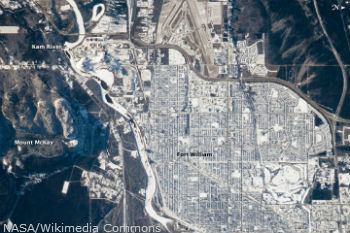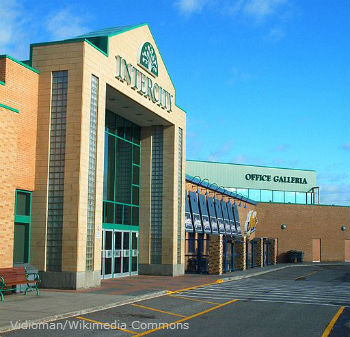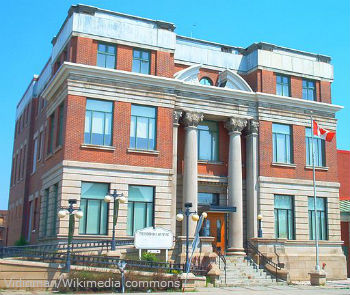In 1970, two cities on Lake Superior merged and Thunder Bay was officially born. Port Arthur and Fort William gave way to “Thunder Bay,”  which is named for the area’s distinct body of water. When residents were voting on what to call the new city, “Lakehead” and “The Lakehead” split the vote, allowing “Thunder Bay” to narrowly win. As a result, “Lakehead”, or “The Lakehead” remain popular nicknames for the city to this day. Thunder Bay is also considered “Canada’s Gateway to the West” due to its vital location on Lake Superior in Northwestern Ontario. Although it remains an important port city, Thunder Bay is now more noteworthy for its medical research and education industries.
Are you considering a move to Thunder Bay? Here’s what you need to know.
Thunder Bay Climate
Thunder Bay’s climate is “humid continental,” according to the Köppen climate system, meaning it gets all four seasons with cold winters and warm summers. Its proximity to Lake Superior makes it a bit milder than it would be if it were inland at the same latitude.
The average high in July is just 24 degrees Celsius, while a typical January high is -8. Even though the lake makes the seasons mild, winters are much harsher than summers because Lake Superior also generates wind.
Thunder Bay gets a lot of sunshine-- more than any Canadian city to its east. That does not mean that precipitation is rare, but it occurs less often than in most lake-bordering cities. Just remember that Thunder Bay can live up to its name, on occasion.
Thunder Bay Neighbourhoods
The former cities of Port Arthur and Fort William are still quite distinct within Thunder Bay, with their own city centres and suburban areas. The urban neighbourhood between the two old cities is called Intercity, and acts as both as a buffer between the old towns, and as Thunder Bay’s own city centre.
The Bay and Algoma neighbourhood is known for having many European residents, especially those of Finnish descent. Thunder Bay has the largest concentration of Finnish people in Canada, but also has a substantial Italian population.  Most Thunder Bay neighbourhoods are English-speaking. Over 81 percent of the city's residents only speak English, as opposed to the 2.6 percent who speak French, Canada’s other official language. Minor Thunder Bay languages include Finish, Italian, Chinese and Ojibwe (an Algonquin language).
Tip: Research your prospective neighbourhood to avoid moving into high-crime areas. Thunder Bay has the second highest incidence of violent crime in the country.
Registering Your Car in Thunder Bay
If you decide to move to Thunder Bay, you will need to get your car registered according to Northern Ontario regulations. Don’t research Southern Ontario regulations, as their registration fees are higher.
To register your vehicle in Ontario, you generally need the following:
- Car insurance
- A title/permit that says you are the legal owner
- Licence plates with current validation stickers
- Your vehicle must meet safety and emissions standards
Thunder Bay Transportation
As the “Canadian Gateway to the West,” Thunder Bay gets traffic from a variety of continent-spanning routes. The Canadian National and the Canadian Pacific Railways both travel through the city, while the Thunder Bay International Airport is Ontario’s fourth busiest.
Local commuters can use either Greyhound Canada or Thunder Bay Transit for bus service. Greyhound Canada provides both local and intercity routes while Thunder Bay Transit offers residents 17 routes within the city’s urban areas.
Thunder Bay Schools
Thunder Bay has about 50 primary and secondary schools including both public and private locations. The Lakehead District School Board runs the majority of the city’s public schools, followed by the Thunder Bay Catholic District School Board which educates the city’s Catholic students. The city’s handful of private schools are all independently operated.
Confederation College and Lakehead University are Thunder Bay’s only post-secondary schools. Lakehead U enrolls over 7,800 students each year and offers a variety of undergraduate and graduate courses. Confederation College only offers undergraduate programs and focuses on applied arts and technology.
Thunder Bay Economy
As an important continental hub in an otherwise rural area, Thunder Bay is Northwestern Ontario’s prime location for commerce, medical care and administration. Historically, the city’s economy was focused on forestry, manufacturing and its port services, but it has shifted towards a more knowledge-based economy in recent years. As a result, many of the city’s top industries are in the public sector. The public school board and the Thunder Bay Regional Health Sciences Centre are two of the city’s top employers.
Thunder Bay’s leading private company is Bowater Forest Products, so the forestry industry still has some life in the city.
Thunder Bay’s unemployment is at 5.8 percent which is considerably lower than the 6.8 percent Canadian average.
Thunder Bay Cost of Living
Thunder Bay generally has a low cost of living. Even though some grocery prices and utility rates are higher than they are other cities, a one bedroom apartment in the city centre can rent for under $800 a month-- less than almost all other major Canadian cities.
Rent remains low because the population, and therefore real estate demand, has declined or remained stagnant for much of the past 25 years. This is in stark contrast to the trends in other Canadian cities. While this may be bad for the city’s long-term economy, it is good for someone who wants to move there now.
Thunder Bay Culture and Contemporary Life
Due to its cultural diversity, Thunder Bay has been an official “Cultural Capital of Canada” since 2003.
Thunder Bay’s notable cultural landmarks include:
- Finnish Labour Temple
- Scandinavia House
- Italian Cultural Centre
- The Polish Legion
As is the case with any multicultural city, Thunder Bay offers several unique dining options. The Downtown area is home to a variety of shops and restaurants that showcase the city’s varied population. While sampling Thunder Bay food, ask for a “Persian.” This icing-covered cinnamon pastry originated in Thunder Bay and is sure to please your sweet tooth.
If you are more interested in the arts, you can visit Magnus Theatre, which is Thunder Bay’s largest professional venue. It shows six stage plays each year. Alternately, the Thunder Bay Community Auditorium holds a wide variety of entertaining events including performances from the Thunder Bay Symphony Orchestra.  Thunder Bay also has several museums that any resident or tourist should visit at least once. The Thunder Bay Art Gallery features an impressive collection of First Nations artwork, making it a great place to explore Canada’s indigenous culture. If you want to see all aspects of history, go to the Thunder Bay Historical Museum for a wider variety of historic exhibits.
If movies are more your speed, Thunder Bay hosts the Bay Street Film Festival, which ascribes to show “Films for the People” every October. Intriguingly, the festival takes place in the historic Finnish Labour Temple, so you can have two cultural experiences at once.
If you want monthly screenings, you can attend the North of Superior Film Association’s showings. They show foreign and Canadian films in the Cumberland Cinema Centre each month, but they also have a spring festival that attracts thousands of visitors each year.
Finally, don’t forget to check out Thunder Bay’s two Canadian Heritage Buildings: The Ordinance Store and the Park Street Armoury.
Thunder Bay Moving Resources
Have you decided to move to Thunder Bay? Hiring movers will help make the job easier. Follow the links below to get free estimates for the indicated services. Remember to get at least three quotes from different companies for any service you need. This will help you get a better idea of a fair price for your move.
Thunder Bay Relocation Tips
- Be careful when traveling or moving to new neighbourhoods. Thunder Bay has one of Canada’s worst violent crime rates.
- Be prepared for cold winters. Being next to Lake Superior may raise the temperature a few degrees, but it also dramatically increases the typical wind-chill.
- If you are moving to Thunder Bay from another country, don’t worry about knowing French. Thunder Bay primarily speaks English.
- If you want to live in the city centre, go for it. Thunder Bay has affordable real estate prices.
Helpful Links
|